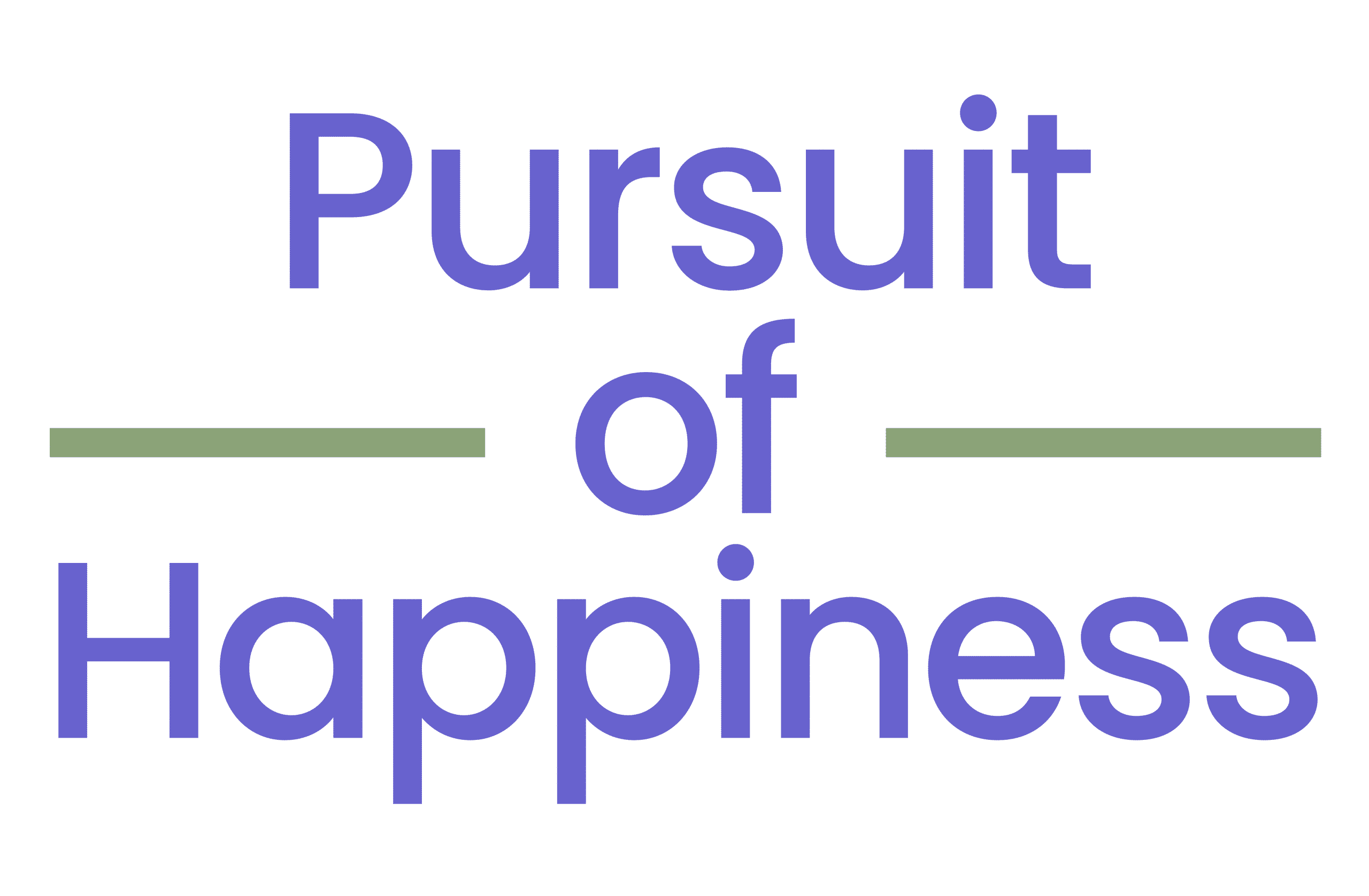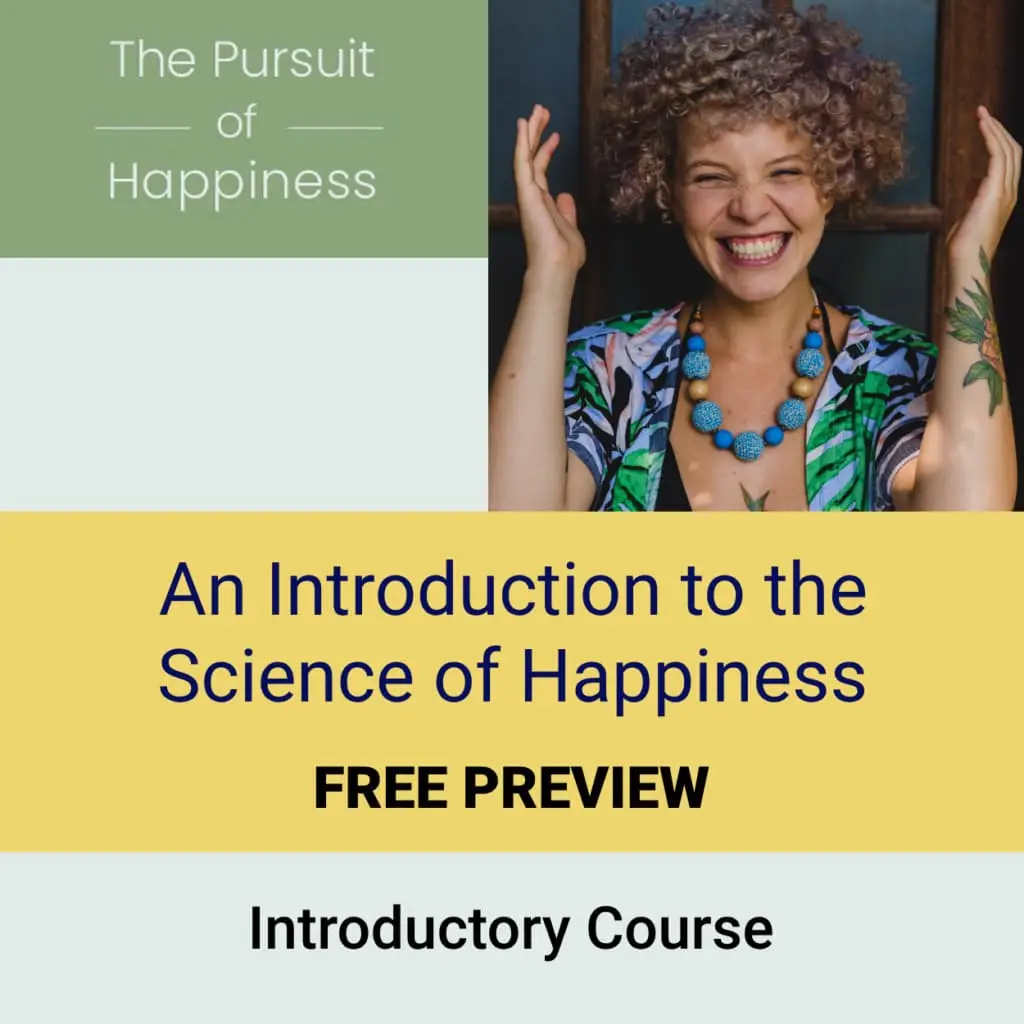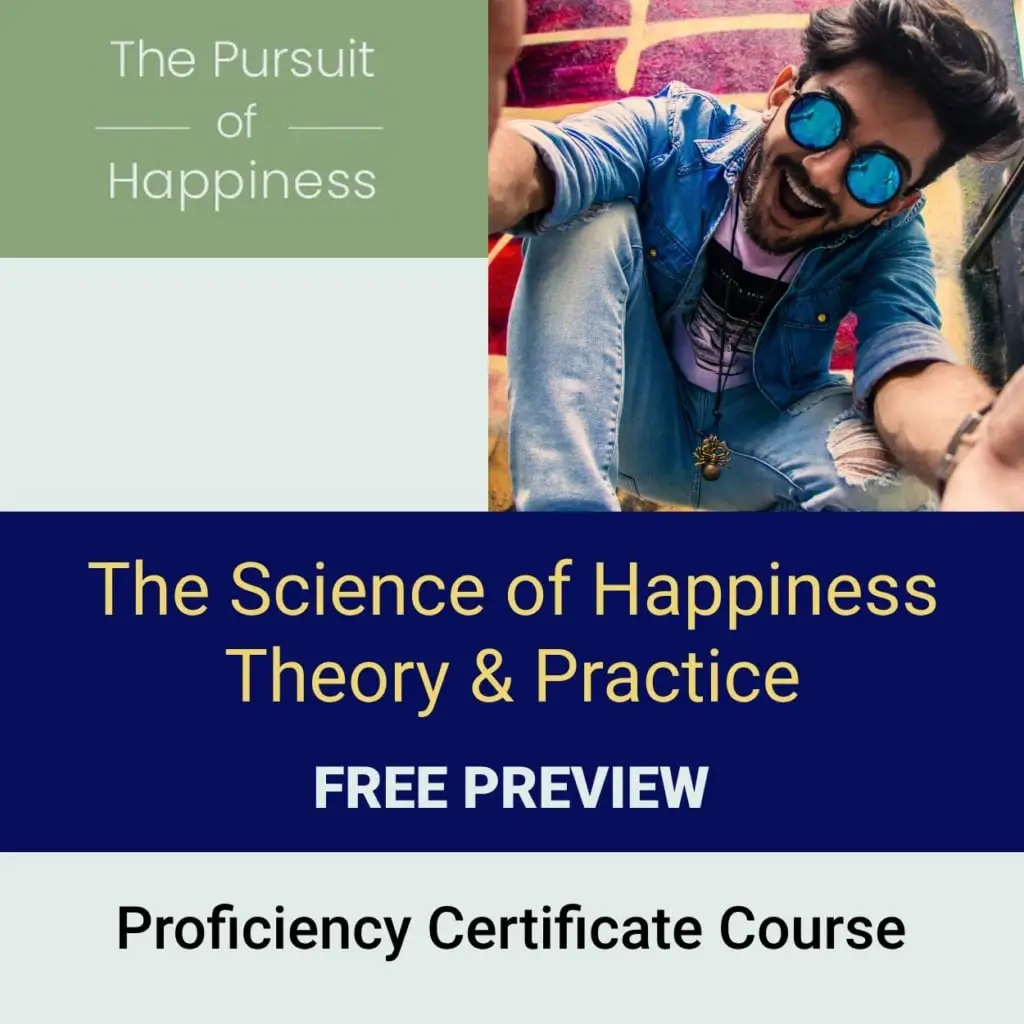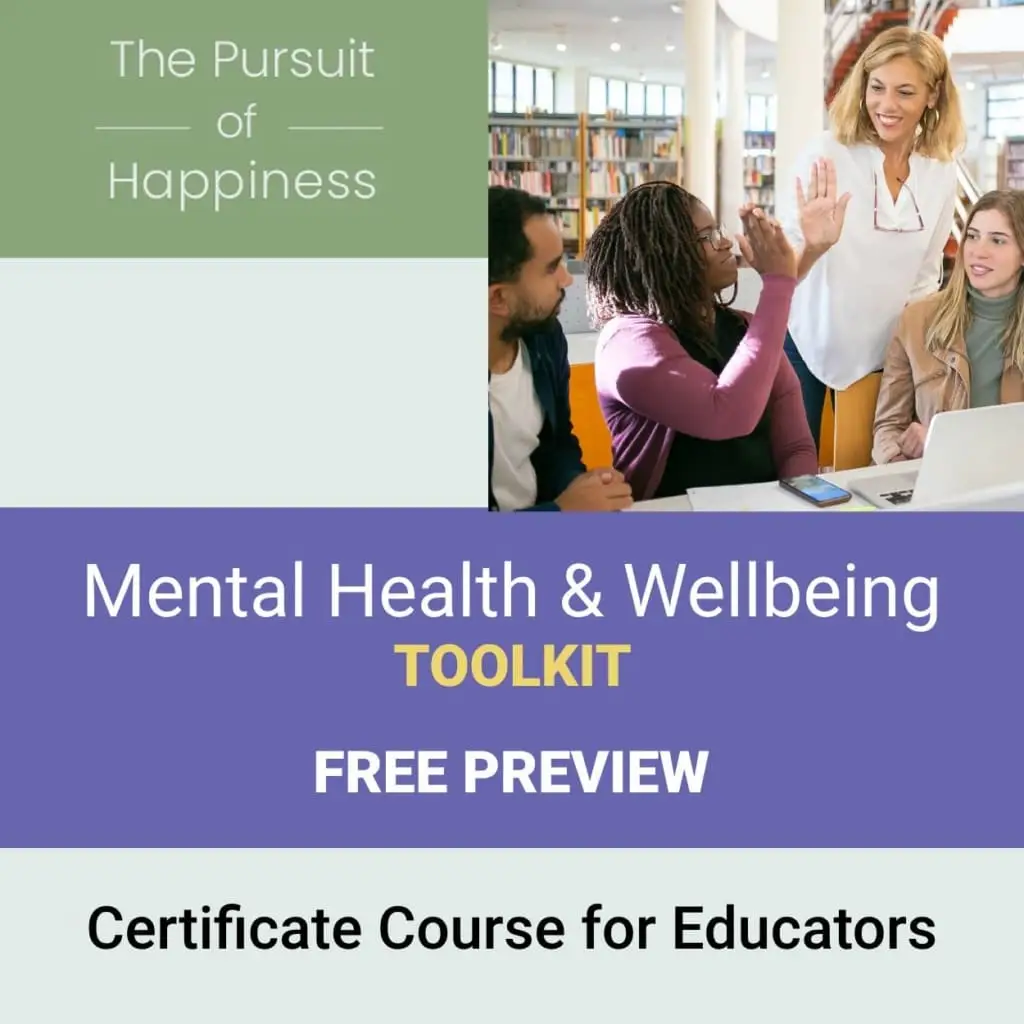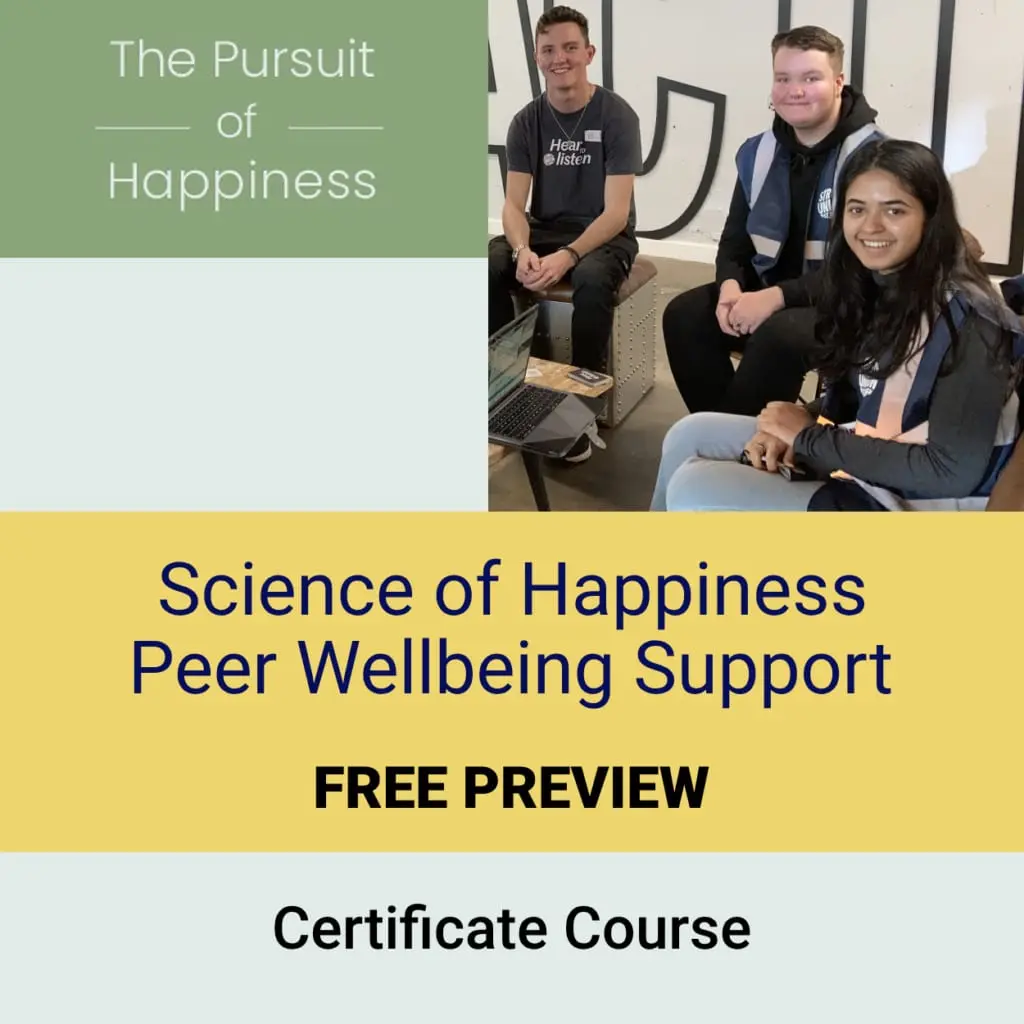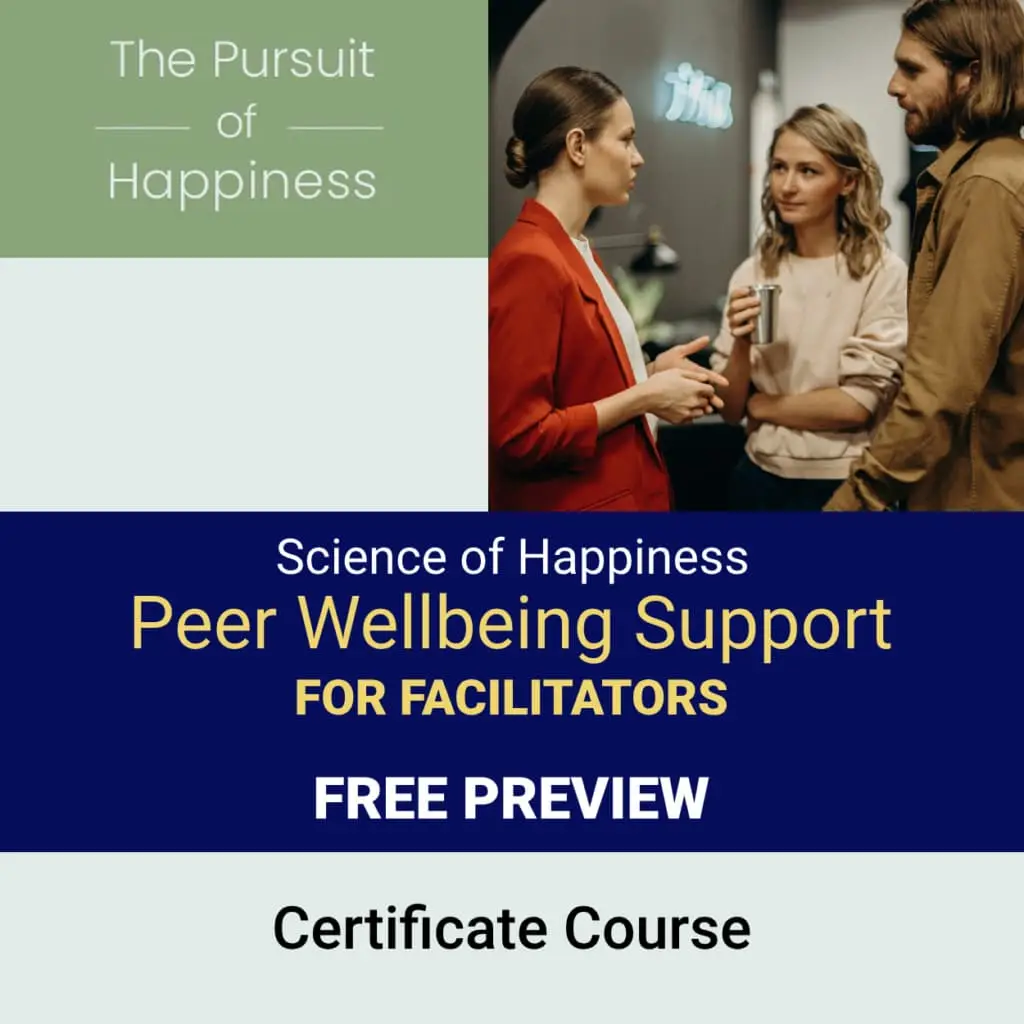Bullet Points for Busy People:
- Kindness and acts of compassion are a major key to becoming happier, according to both ancient wisdom and modern science.
- Both spontaneous acts of kindness and planned acts of kindness, such as volunteering, can lead to greater happiness and well-being, and the frequency of these acts is important in terms of the benefits experienced.
- The essence of random kindness is that you’re not calculating how you benefit. It’s kindness for the sake of kindness.
- The smallest gestures, such as expressing gratitude, or assisting someone with a household task, can boost the mood of both parties involved.
- Motivation seems to affect the emotional impact of volunteering as well as random acts of kindness. For example, are we volunteering mainly to polish a resume or in order to spread a little happiness?
- Try to involve recipients of volunteering in the activity, to avoid triggering a sense of powerlessness.
INTRODUCTION
If I only had five seconds to talk about the biggest secret to becoming happier, I would include acts of kindness and compassion, and especially acts of kindness that are not planned or calculated, but come straight from the heart. Kindness can take many forms, from planned acts such as volunteering, to unplanned, spontaneous acts of generosity.
How do we know that kindness is key to happiness? Ancient wisdom and modern science both tell us the same thing. Confucius once told his students, “There is one thread that strings together my teachings.” The thread that passed through the center of Confucius’ teachings was the Chinese concept of “shu,” the ability to put oneself in someone else’s shoes, and act upon it. I guess you could describe that habit as “thoughtful kindness,” or applied empathy. Kindness is the string that runs through the habits of happy people like a thread through a string of beads.
Science is now proving what Confucius tried to tell us 2,500 years ago. If you want to flourish, and be happy, be kind.
SCIENTIFIC INSIGHTS
There are many different ways we can express kindness and compassion. For the sake of simplicity, we can divide them into two kinds: planned acts of kindness such as volunteering, and unplanned, spontaneous acts of kindness. No matter which, the bottom line is that people who care for others on a regular basis are happier and less depressed.
Volunteering:
In the case of volunteering, scientists have found out that people feel happier with only one experience, but the people who experience the most benefit in terms of their mood were people who got involved in repeated activities, or what they call successive waves of volunteering. Considerable evidence exists that the mood boosting effects can last for months. There has been a great deal of research on elderly people volunteering, and less on teenagers and youth. The surprising difference between the two age groups is that the elderly experience a more significant boost in well-being through volunteering.
One of the main explanations for this boost in wellbeing is about motivation. The elderly mostly volunteer for the sake of volunteering, but in many cases young people volunteer for extrinsic reasons, that is, they are gently pressured to do so in various ways. For example, they are following the crowd or they are encouraged to volunteer by a parent, or they are mainly volunteering to polish up their resumes. We don’t know exactly why, but the benefits we obtain from volunteering depend on motivation. One likely reason is that the sense of control that people feel over their own lives, what psychologists call self-efficacy, is very important for happiness. If we feel that we’re in control, we are much happier than if we feel that our lives are being controlled by others. We are talking about 7 habits or skills on these pages, which, for the sake of simplicity, we have distilled from a multitude of life skills that impact happiness. If we had to pick an eighth, perhaps we should make it about self-efficacy, about cultivating self confidence.
Participation by recipients is very important for their self-esteem. Volunteers often experience greater happiness but, in some cases, the people who are on the receiving end become more depressed. Why is that? It is mainly because they feel powerless, and that people are assisting them because they are powerless. We are talking about self-efficacy once again! Next time you go volunteering, try to get people involved in something that makes them feel that they are a part of the activity and not just the recipient.
RAKs: Random Acts of Kindness:
The second way we can express compassion is through unplanned acts of kindness, the spontaneous, random kind. They have a surprisingly large impact on our well-being, and we can practice them more naturally, as we go about our daily activities. The whole point of random acts of kindness is that we are not calculating how we benefit through the act of kindness. It’s kindness for the sake of kindness.
Have you discovered greater happiness through these sorts of unplanned acts of kindness? These can be very small things, like suddenly offering a seat to someone on the bus, calling a relative who lives alone, or perhaps reaching out to a fellow student who looks lonely or confused. And, of course, in that kind of situation the worst thing you can ask your colleague or fellow student is, “Oh, you look depressed! What’s the matter?” The best thing to do is simply try to engage them in conversation and express an interest in what they are doing. Active listening, that we described as a key component of close relationships, is itself an act of kindness. As the saying goes, “listening is loving.”
Aknin, L. B., Dunn, E. W., & Norton, M. I. (2012). Happiness runs in a circular motion:Evidence for a positive feedback loop between prosocial spending and happiness. Journal of Happiness Studies, 13(2), 347-355. Intro: This study questions whether a positive feedback loop exists between spending money on others (i.e. prosocial spending) and happiness levels. Previous research suggests that happiness levels can be increased, but the effects are often transitory. Despite the fleeting benefits of these strategies, the possibility that the well-being experienced after engaging in such behaviors could encourage subsequent engagement in similar behavior remains. If such a paradigm exists, a positive feedback loop may be possible, which provides a potential path to sustainable happiness. Previous research has established that spending money on others leads to higher levels of happiness than spending money on oneself (Dunn et al. 2008, 2010), but this study examines whether simply recalling memories of generous spending leads to an increase in happiness and whether increased levels of happiness lead people to want to spend on others again. Researchers hypothesized that recalling a previous act of prosocial spending would make people happier than recalling a previous act of personal spending.
This work has been identified as a core study because it seeks to answer the question: Does recalling past caring behavior lead to future caring behavior? The answer to this question offers insight into the cyclical nature of prosocial behavior.
Methods: Undergraduate participants (N= 51) from the University of British Columbia were randomly assigned to one of four recall conditions in a 2 (spending amount: $20 vs. $100) X 2 (purchase target: self vs. someone else) design. Recall instructions were designed to elicit vivid reminiscence, modeling those used by Strack et al. (1985). After describing the memory, participants reported their happiness on the Subjective Happiness Scale (Lyubomirsky and Lepper 1999).
Next, participants were asked to choose between two monetary windfall amounts ($5 vs. $20) and two different ways to spend the money. The money could be spent on 1) a bill, expense, or gift for themselves (personal spending) or 2) on a gift for someone else or a donation to charity (prosocial spending). This procedure was conducted anonymously to mitigate social desirability concerns by giving participants cards labeled A, B, C, D. Participants were reassured that research assistants were unaware of which letter corresponded to which experimental condition.
A 2 (purchase target: self vs. someone else) x2 (purchase amount: $20 vs. $100) factorial ANOVA was used to analyze happiness ratings. Subjects who were assigned to recall a purchase made for someone else were significantly happier than subjects who were asked to recall a purchase made for themselves (F(1, 47) = 4.66, p < .04, d = .61). The main effect of purchase amount and the interaction between purchase amount and purchase target were both non-significant (p > .05).
Discussion: Findings support the existence of a positive feedback loop between prosocial spending and happiness. Cumulatively, results show that 1) recollection of past prosocial spending leads to higher levels of happiness, 2) higher levels of happiness increase the likelihood of engaging in prosocial spending, and 3) recollection of a past experience of prosocial spending increased the likelihood of spending a new windfall on others, provided that happiness levels are elevated in the meantime. Although the feedback loop might seem intuitive, the present data adds to the understanding of when prosocial behavior is likely to be repeated. Repetition of behavior is linked to the happiness experienced after the initial kind deed. Finally, when considering whether the amount of money spent influence happiness returns, data suggest that how the money is spent may matter more than how much money is spent.
Becker, J. C., Tausch, N., & Wagner, U. (2011). Emotional Consequences of Collective Action Participation Differentiating Self-Directed and Outgroup-Directed Emotions. Personality and Social Psychology Bulletin, 37(12), 1587-1598. Intro: The present study considered the emotional and behavioral consequences of collective action participation, stressing the importance of distinguishing outgroup-directed (e.g. feeling angry at an outgroup) and self-directed (e.g., feeling good or satisfied with oneself) emotions experienced as a result of said participation. Prior research suggests that not only are emotions predictive of collective action participation, collective action participation also feeds back into the strength and valence of emotions, thus motivating engagement in future actions. Collective action participation can impact both “positive” emotions (such a joy and happiness) and “negative” emotions (e.g. anger and contempt) simultaneously, and intrinsic motivation and social identity processes influence these emotional outcomes.
Study 1 compared self-directed and outgroup-directed emotions and intentions for future collective action with no-action control conditions. In Study 2, the addition of four more control conditions increased the range of negative outgroup-directed emotions and action tendencies while addressing confounding variables. It was predicted that collective action participants experience more outgroup-directed behavior while increasing feelings of self-directed positive affect.
This 2011 study was identified as key research because it examines how an individual’s involvement in a valued cause or organization affects future happiness. Such research supports the idea that demonstrating caring behavior enhances well-being.
Method: In Study 1, student participants (N= 71, Mage= 21.30 years) engaged in a 2 (collective action participation: yes, no) X 2 (order of emotion measurements) between-participants design. Students were informed of a hiring freeze, which would increase tuition fees at their respective university. Students were randomly assigned to two initial conditions: direct interception of dependent measures or participation in collective action against the government. All participants were then administered the self-directed and outgroup-directed emotion measures of outgroup-directed anger, self-directed positive affect, and collective action intentions.
Study 2 intended to corroborate the findings of Study 1 while excluding potential alternative explanations of behavior. Researchers intentionally chose a type of collective action that offered participants the opportunity to get more involved as the experimental condition. Four control conditions were added. In the first condition, students read about past protests against the government. The second condition required students to engage in collective action directed at another target group. Students in the third conditional groups read about past protests against an alternative, non-government group. A fourth group consisted of an additional baseline control, where students answered the dependent measures directly. Participants at the University of Marburg (N= 101, M¬age= 22.94 years) were recruited by research assistants and asked to devote 10 minutes to a research project. Students who agreed to participate were subjected to four procedures. The first group was instructed to read a brief text addressing government wrongdoings into a recorder, following the recitation by blowing a whistle as loudly as possible. In the second group, participants read a short text to themselves about an alleged campaign against the government, and they indicated whether or not they were familiar with the campaign. The third condition was identical to the first (i.e. reading a text out-loud and blowing a whistle), but the text targeted a non-government group. The fourth condition mirrored the second, but students read text addressing past campaigns against pollution. In the fifth condition, participant completed the dependent measures only.
Participants’ outgroup-directed emotions were measured in the following categories: outgroup-directed anger, self-directed positive affect, identification with the protest movement, group efficacy. Outgroup directed contempt and collective action intentions were addressed as well.
Discussion: Findings showed that collective action participation increases self-directed positive affect and outgroup-directed negative affect. In regard to self-directed emotions, these results showed that collective action participation increased positive affect (e.g. joy and satisfaction). This relationship supports prior evidence that activism is positively correlated with well-being (Klar and Kasser, 2009). Interestingly, increased levels of outgroup-directed negative affect (i.e. anger towards a the outgroup when the ingroup is perceived to be treated unfairly) were predictive of future engagement in collective action, but there was no relationship between self-directed positive affect and future participation. Outgroup-directed emotions rather than individual enhancement drive long-term political protest.
Borgonovi, F. (2008). Doing well by doing good. The relationship between formal volunteering and self-reported health and happiness. Social science & medicine, 66(11), 2321-2334. Intro: Borgonovi’s research used self-reported measures of health and happiness to examine whether engaging in volunteer work leads to greater well-being. Research suggests clear ties between volunteerism and good physical and mental health: those who volunteer have decreased rates of depression and mortality, and they are more likely to report being happy. However, this link does not explain motivating factors for voluntary work (self-selection), nor does it consider reverse causation: people who feel well may be more likely to engage in voluntary work.
This study defragments the relationship between good health and doing good, making it a key component of our chosen literature. While previous research considers the impact of prosocial behavior on physical health, Borgonovi’s novel proposal suggests that physical health may contribute to caring behavior.
Method: This paper analyzed the Social Capital Community Benchmark Survey (SCCBS) dataset. The dataset was amalgamated by the Harvard University Kennedy School of Government in 2000, and data reflects volunteer work in a range of contexts as well as measures of self-reported health and happiness. The SCCBS contains a sample of the U.S. population and specific samples from 49 communities across 29 states, cumulating in nearly 29,200 observations.
Within the SCCBS, participants were asked if they had engaged in any volunteer work over the past 12 months for the following groups and organizations: cultural, artistic, health, neighborhood and civic, needy, religious, and youth-school. Measures of both frequency and type of volunteerism were recorded. Global measures of health and happiness were obtained with the single-item questions: “how would you describe your overall health these days?” and “taking all things together, how happy would you say you are at the present?.” Both questions asked subjects to respond using a 4-item scale, where 0 = poor health, 4 = excellent health for health and 0 = not at all happy, 4 = very happy for happiness ratings.
Ordered probit analyses were used to estimate the association between health and happiness, and a second stage least squares regression framework was used to assess reverse causation, self-selection, and omitted variable bias.
Discussion: Results indicate that formal volunteering is correlated to health and happiness, and systematic differences in correlations were not due to differences in socio-economic characteristics. Volunteering is significantly associated with happiness, and increased frequency of formal volunteering increases levels of self-reported happiness. The type of volunteer work (religious vs. secular) suggests a somewhat stronger link between religious volunteering and well-being versus that of secular volunteering and well-being. Although volunteering was associated with higher levels of health and well-being, other forms of altruistic behavior, such as monetary or blood donations, were not.
This paper makes an important contribution by suggesting that the positive association that exists between volunteering and health is not causal; rather, it is driven by reverse causality, self-selection, and omitted variable bias. Regarding socio-economic factors, results indicate that low economic status is associated with poor health among those who volunteer and those who do not. However, low status is associated with unhappy states only among individuals who do not volunteer, while individuals who volunteer are equally likely to be happy whether they are high or low status.
Bruhin, A., & Winkelmann, R. (2009). Happiness functions with preference interdependence and heterogeneity: The case of altruism within the family. Journal of Population Economics, 22(4), 1063-1080. Intro: The present study used secondary analysis of a data set from the German Socio-Economic Panel (GSOEP) to examine the prevalence and extent of altruism by examining the relationship between parents’ and their adult children’s subjective well-being. Previous research had taken an individualistic approach to happiness; however, this study intends to broaden the literature by focusing on positive preference interdependence, as defined by Becker (1981), as it relates to altruistic behavior. Well-being is targeted as a measure of both the frequency and extent of altruism within the population.
This study is particularly relevant because it considers caring behavior not simply as a function of the individual but rather as a product of social influences. This lens allows readers to gain an understanding of how caring behavior develops and influences others.
Method: A finite mixture regression model was constructed to segregate parents’ altruistic motivations, allowing for the identification of paternalistic preferences, joy of giving, and reciprocity as motivating factors for altruism within the GSOEP. Data was analyzed for the years 2004-2007, and 2,577 households were extracted. Each household had distinct parents and at least one child living in a spin-off household (outside the parental household).
Among a battery of socioeconomic measures, the GSOEP included a self-report measure of subjective well-being, which prompted participants to respond to a global life satisfaction question: “How satisfied are you with your life, all things considered?” Ratings were completed on a 10-point scale, 0 = completely dissatisfied and 10 = completely satisfied. Additionally, researchers extracted information regarding the health, age, employment status,monthly disposable income, household size, marital status, and mean geographic distance between parental and spin-off households.
The basic analytic modeling framework was an extension of the standard ordered probit model, which allowed researchers to separate altruistic parents from those who are assumed to be selfish. After extensive analyses, four total finite mixture regressions, where the second addresses the main research question: what are the prevalence and extent of altruistic preferences?
Discussion: Results estimate that that share of altruists lies between 21% and 27% of the population, with the difference resulting from family-specific events. It was also determined that adult children’s reported life satisfaction was a strong predictor of their altruistic parents’ subjective well-being. Actual transfers of altruistic behaviors to children are considerably larger for parents assigned to an altruistic group, which supports the results of previous studies confirming the presence of altruistic preferences in at least a minority of the population. Future study should investigate the extent of segregated social preferences.
Choi, N. G., & Kim, J. (2011). The effect of time volunteering and charitable donations in later life on psychological wellbeing. Ageing and Society, 31(4), 590. Intro: Although substantial research has investigated both short- and long-term salutary effects of time volunteering on physical and mental health in older adults, research examining the effect of charitable donations on older adults is lacking. This study questions if time volunteering and charitable donations made nine years earlier had a positive direct effect on the psychological well-being of adults age 55 and above. Data were gathered from the first and second waves of the Midlife Development in the United States (MIDUS 1995-1996 and MIDUS II, 2004-2006) studies. Researchers hypothesized that (1) moderate and/or high levels of TI time volunteering would positively affect T2 psychological well-being and (2) moderate and/or high levels of TI charitable donations would positively affect T2 psychological well-being.
This work was identified as a key study because Choi & Kim explicitly examine the effects of caring behavior on older adults. Such work diversifies research of well-being, which can be limited to data gathered from college-student populations.
Method: Mplus software was used to determine latent trajectory class modeling of the effects of time on volunteer activity and charitable donations using data from the MIDUS studies (N = 1,672). Bivariate regressions were used to compare T2 respondents to their T1 well-being; number of volunteer hours; donation amounts; human, cultural, and social capital; and demographic characteristics.
Results show that a moderate level of time volunteering (up to 10 hours monthly or 120 hours annually) and any amount of charitable donations made 9 years earlier positively affected physical and psychological well-being in older adults. Interestingly, while spending more than 10 hours per month volunteering did not increased well-being, increased monetary amounts of charitable donations (e.g. $1,200 versus $100) did elicit greater well-being. Also, religious donations were found to be a significant predictor of future well-being, but the effects of political and secular donations were inconclusive.
Discussion: This research supports charitable donation as an attribute of the donor’s sense of self-efficacy and satisfaction that reflects an underlying sense of sympathy, altruism, and desire to do good deeds. Such actions are especially applicable to improving psychological well-being in older adults, where functional impairments may prevent them from engaging in volunteer work. However, MIDUS I & II data sets were comprised of relatively highly-educated, non-Hispanic Whites; therefore, minority groups were underrepresented. Perhaps more importantly, donor units for the survey were either individual respondants or their families. Despite the study’s novel examination of the effect of charitable donation on psychological well-being, future research should aim to target an established (either all individuals, or all families) but diverse donor population.
Cosley, B. J., McCoy, S. K., Saslow, L. R., & Epel, E. S. (2010). Is compassion for others stress buffering? Consequences of compassion and social support for physiological reactivity to stress. Journal of Experimental Social Psychology, 46(5), 816-823. Introduction: The present study considered the role of compassion for others and social support in psychological stress reactivity. Compassion was defined as the concern for others’ well-being, and it is acknowledged as a motivating factor for giving. Research has shown that receiving compassion from others, termed “social support,” can increase well-being by serving as a protective factor against disease and even death (e.g. Broadhead, et al., 1983). Interestingly, more compassionate individuals are more likely to take advantage of social support when it is offered when compared to those low in compassion. Such social support is theorized to attenuate acute physiological stress responses, thereby reducing cardiovascular activity and hypothalamic-pituitary-adrenal (HPA) axis reactivity and increasing parasympathetic nervous system activity and immune functioning.
In this study, women were subjected to a modified Trier social stress test (TSST; Kirschbaum, Pirke, & Hallhammer, 1993). It was hypothesized that compassion would moderate the palliative effect of social support during an acute psychosocial stressor. Furthermore, researchers predicted that women high in compassion would benefit more from the supportive TSST condition when compared to their low-compassion counterparts. Finally, compassion was not expected to predict physiological well-being in the absence of social support.
This study considers caring behavior as a protective factor against the negative health effects of stress, making it a key study in the chosen literature. Additionally, Cosley et al. consider the effects not only of receiving social support (a form of caring behavior) but also practicing caring behavior on health.
Method: Participants (N = 59) were a community sample of San Francisco, CA residents who were instructed to complete and online battery of questionnaires, including demographic measures and the study’s measure of compassion.
Compassion was measured using the compassion subscale of the dispositional positive emotion scales (Shiota et al., 2006). During the laboratory session, participants were administered a social stress test. Physiological measures were taken by electrocardiogram (ECG), impedance cardiogram (ICG), and blood pressure sensors. Salivary cortisol was examined 60 min after arrival (baseline) and 20 min after the onset of stress (peak).
Following a 5 min baseline period, subjects were instructed to present a speech to two evaluators (one male and one female). Participants were told that they would have 5 min to prepare, and, after the prep period, participants performed the speech task, an interview task, and a mental math task (each task being 5 min in length). To manipulate social support, subjects were randomly assigned to perform the social stress task either to supportive or neutral evaluators. In the support condition, evaluators interrupted the participant at 30s intervals to provide verbal praise for the speech. Similarly, the neutral condition featured evaluator interruptions at 30s intervals; however, evaluators simply restated the task instructions while maintaining flat non-verbal feedback. Physiological measures of arterial blood pressure, cortisol levels, and high-frequency heart rate variability (HF-HVR) were collected after and throughout the stress task.
Because the compassion variable was negatively skewed in both conditions, researchers reflected the variable and took the inverse. Hypotheses were tested using hierarchical regression analyses. For psychological variables, baseline values were compared to the main effect of compassion and social support. Results showed the interaction of compassion and social support to be a significant predictor of systolic blood pressure (∆R2 = .03; F(1, 43) = 5.27, p = .02; ß = -.43, p < .01) and cortisol reactivity (∆R2 = .08; F(1, 49) = 6.65, p = .01; ß = .17, p = .22). In both cases, increased compassion attenuated the acute stress response during stress but not the neutral condition. Only main effects of social support (ß = .28, p = .03) and compassion (ß = .36, p < .01) had a significant relationship with HF-HRV. Simple slope analyses revealed significant differences between HF-HRV between support differences at high levels of compassion (ß = .52, p < .01), meaning that individuals with social support who are also high in compassion will experience reduced HF-HRV.
Discussion: This study examined the interaction between individual differences in compassion for others and receival of support during a stressful event in order to predict reactivity to an acute stressor. Results supported hypotheses, demonstrating that, when provided social support, participants with higher compassion had lowered their systolic and diastolic blood pressure as well as cortisol, and they had increased their HF-HRV during the speech task. These finding support the argument that more compassionate individuals may also be more benefited by support, particularly in times of stress. Effectively, compassion may be associated with health partly through it interaction with receiving support by its ability to reduce acute stress reactivity.
Kahana, E., Bhatta, T., Lovegreen, L. D., Kahana, B., & Midlarsky, E. (2013). Altruism, Helping, and Volunteering Pathways to Well-Being in Late Life. Journal of aging and health, 25(1), 159-187. Intro: This study examines the influence of prosocial orientations including altruism, volunteering, and informal helping on positive and negative well-being outcomes among elderly participants living in a retirement community. Offering a novel contribution to previous understanding of prosociality and well-being, this research explores both dispositional and behavioral manifestations of altruism in positive and negative outcomes. Prosocial behaviors were grouped into three areas: altruistic attitudes, volunteering, and informal helping.
This work has been identified as a key study because it considers both dispositional and behavioral manifestations of caring behavior and its effect on well-being in a specified population.
Method: Data for this study was gathered from a longitudinal study of successful ageing conducted by the Elderly Care Research Center. Specifically, data was utilized from waves spaced three years apart (Waves 2 and 5). Participants (N= 585) from a Florida retirement community completed in-home, face-to-face interviews where well-being was measure by four dependent variables: life satisfaction, positive affect, negative affect, and depressive symptomology. Altruistic attitudes, frequency of volunteering, and informal helping behavior were identified as predictive factors/independent variables, and ordinal logistic regression was used to determine correlations.
Discussion: Altruistic attitudes were prevalent in the sample, and results showed both altruistic attitudes and helping behaviors to be significant predictors of positive affect. Results also link prosocial orientation and positive affect due to networked factors; however, the absence of a linkage between negative affect and prosocial orientation is likely due to individual rather than networked aspects of depressive symptoms and negative affect. Overall, results confirm that altruistic attitudes have an independent influence on positive attitudes later in life.
Lu, L., Gilmour, R., Kao, S. F., Weng, T. H., Hu, C. H., Chern, J. G., … & Shih, J. B. (2001). Two ways to achieve happiness: When the East meets the West. Personality and Individual Differences, 30(7), 1161-1174. Intro: Lu et al.’s studied investigated the cultural effects on self understanding as it relates to happiness, specifically in the context of Eastern and Western societies. Culture exerts considerable influence on an individual’s ability to conceptualize a path to well-being. The study highlights independent/interdependent self-construals as self schemas that shape and guide an individual’s behavior to reflect the core values of their respective culture. In the interpersonal sphere, people with independent self-construal generally believe in active control, but individuals with interdependent self-construal tend to focus on relationship harmony. These construals reflect Western and Eastern cultures, respectively. The purpose of the current study was to explore happiness cross-culturally with a culture-sensitive approach.
The current study is important because Lu et al. consider the impact of cultural values on caring behavior of an individual. With this lens, the study views the paths to happiness as numerous and context-dependent. This integrative approach offers greater insight into those aspects of happiness that may change from one culture to another.
Method: Self-reported data was collected from both Taiwanese (N = 550) and British (N = 196) community samples, where participants completed questionnaires measuring self-construals, control belief, harmony belief, social interaction, and happiness.
In Taiwan, various data collection methods were used to target different populations. One set of questionnaires (N = 78) was mailed to community adults who were enrolled in night classes offered by the government. Another set was given to students of one senior high school (N = 152), one vocational school (N = 98), and one university (N = 46). Finally, senior high school and vocational school student were asked to have each parent fill out questionnaires (N = 176). In the UK, all questionnaires were mailed to a broad cross-section of community adults.
Self-construals were measured with the 24-item “Independent and Interdependent Self-construals Scale” (Singelis, 1994), which required subjects to respond on a 7-item Likert scale. Control belief was assessed by the “Interpersonal Control” subscale of the “Sphere of Control Inventory” created by Paulhus & Christie (1981). Both the “Chinese Value Survey” and the “Traditional Values Scales” were used to rate harmony belief. The 16-item Social Interaction Inventory provided measures of social interaction while the Chinese Happiness Inventory assessed happiness levels.
Pearson correlation matrices for major research variables were constructed separately for Taiwan and the UK. There were significant positive correlations between interdependent self construal and harmony belief as well as independent self-construal and control belief in both samples. Importantly, the former relationship was stronger in Taiwan (R = .65 versus R = .20 in the UK) whereas the latter was stronger in the UK (R = 0.47 versus R = 0.29 in Taiwan). Both harmony belief and control beliefs correlated significantly with overall measures of social interaction. Positive and harmonious feelings were positively correlated with happiness for both groups.
Discussion: For both Taiwanese and British participants, interdependent self-construal was a strong determinant of harmony belief, and independent self-construal was a strong predictor of control belief. For both groups, beliefs regarding social interaction impacted daily interaction experiences, which directly contributed to happiness. Control belief also demonstrated a strong direct effect on happiness. Findings also discussed the effects of cultural differences on the psychological processes of happiness, ultimately supporting coexistence of East and West culture for maximized well-being.
Post, S. G. (2005). Altruism, happiness, and health: It’s good to be good. International Journal of behavioral medicine, 12(2), 66-77. This article summarizes and assesses existing research on altruism and its relation to mental and physical health. Altruistic emotions and behaviors are associated with greater well-being, health, and longevity, and these emotions have important implications in the fields of public and mental health, as well as evolutionary psychology. Post suggests several complementary interpretive frameworks (e.g. evolutionary biology, physiological models, and positive psychology) that offer explanations of the relationship between altruistic behavior and health. Potential public health implications of this research are discussed, as well as directions for future studies. Ultimately, the article supports a strong correlation between the well-being, happiness, health, and longevity of people who are emotionally and behaviorally compassionate, provided they are not overwhelmed by helping tasks.
Schnall, S., Roper, J., & Fessler, D. M. (2010). Elevation leads to altruistic behavior. Psychological Science, 21(3), 315-320. Intro: Feelings of elevation, induced by witnessing another person perform a good deed, have been hypothesized to motivate helping behavior. However, despite growing interest in the determinants of prosocial behavior, only limited evidence that elevation leads to increases in altruistic behavior exists. More specifically, prior research has not studied whether elevation affects altruism across divergent contexts, nor has it determined if elevation influences helping behavior beyond the effect of general positive affect.
The present study used two experiments to investigate the relationship between elevation and helping behavior. Only female participants were employed to avoid the possibility of confounding variables associated with gender roles. This research has been identified as a key study because of its innovative measurement of elevation feelings and its effect on caring behavior.
Method:
Experiment 1: The sample recruited university women (N = 59) who were randomly assigned to either an elevation-inducing condition or control condition prior to assessment of helping behavior. Subjects in the elevation-inducing condition were shown a 7 min clip from “The Oprah Winfrey Show,” as demonstrated by Silvers and Haidt (2008), and the control condition was shown the first 7 min of a nature documentary. Immediately following the video, participants in both conditions were asked to rate how they felt from 1 (didn’t feel at all) to 9 (felt very strongly), where ratings were done on: “moved,” “uplifted,” “optimistic about humanity,” “warm feeling in chest,” “want to help others,” and “want to become a better person.” Participants rated feelings of happiness on the same scale.
Then, participants were given 5 min for a writing task, which asked them to recall as much information as possible about the video clip. Upon completion of the writing task, the experimentor informed each subject that she needed to leave the room briefly, but not before paying the participant and asking each to complete a payment receipt. The receipt contained the dependent measure, which asked participants if they would be willing to take part in an additional, unpaid study (“yes” or “no”). This setup allowed participants privacy during completion of the dependent measure–an important component to “naturalizing” the study. Finally, participants completed a manipulation check and were debriefed.
A two-way ANOVA was used to test the effects of the elevation-inducing condition and control condition on all items indicative of elevation, where a main effect of elevation was significant across all elevation items. However, there was not a significant difference between the groups’ self-reported measures of happiness. As predicted, significantly more participants in the elevation-inducing condition agreed to volunteer for an unpaid study when compared to the control group.
Experiment 2: The second experiment recruited 36 female university students who were told that they would be completing a 1-hour study on episodic memory in which they would view a film clip, write about it, and complete a 30 min computer task. Participants were randomly assigned to watch the elevation film clip (elevation condition), the control film clip (control condition) from Experiment 1, or a clip from a comedy show intended to induce mirth (mirth condition). Then, participants completed the same manipulation check from Experiment 1 and the writing task. For the computer task, the experimentor feigned three unsuccessful attempts to open the program to be completed. She then told each participant that they were free to leave with full compensation due to the error; however, as the participant rose to leave, the experimentor asked whether she would be willing to complete another questionnaire at their convenience. The experimentor warned that the task would be lengthy and boring, but the participation would greatly assist her research. If the participant agreed, she was seated and asked to complete elementary math problems, while the experimentor secretly timed the task.
Researchers used a one-way ANOVA was used to determine the effect of emotion condition (elevation, mirth, control) on the number of minutes spent on the boring math problem task. Analyses of helping behavior revealed significant main effects for condition (F(2,29) = 6.84, prep= .98, ηp2 = 0.32). Interestingly, participants in the elevation condition spent almost twice as much time on the math task compared to the two other conditions. Post hoc Scheffe tests showed that, although the elevation condition differed significantly from the control and mirth conditions, there was no significant difference between scores of the control and mirth conditions.
Experiments 1 & 2: Correlation analyses were used to examine the relationship between reported feelings of elevation (from Experiment 1) and subsequent helping behavior (Experiment 2). Correlations between elevation items and the number of minutes spent completing the math task were computed, and five of the six elevation items were significantly correlated with task time. There were no significant correlations between levels of happiness or amusement and task time.
Discussion: Results provide strong support for the claim that elevation–elicited by witnessing another person’s good deeds–increases helping behavior. Findings from Experiment 2 showed that participants experiencing elevation spent approximately twice as long helping the experimenter with a tedious task as participants experiencing boredom or a neutral emotional state. These results suggest that feelings of elevation–not feelings of amusement or happiness–predicted the amount of helping. Together, these results provide evidence that witnessing another person’s altruistic behavior elicits elevation, which, in turn, leads to tangible increases in altruism. However, future research should consider empathy as a predictor of altruistic behavior, as prior research suggests that empathizing with the plight of an individual is a key motivating factor for helping behavior.
Becker, J. C., Tausch, N., & Wagner, U. (2011). Emotional consequences of collective action participation differentiating self-directed and outgroup-directed emotions. Personality and Social Psychology Bulletin, 37(12), 1587-1598.
Diener, E., & Oishi, S. (2005). The nonobvious social psychology of happiness. Psychological Inquiry, 16(4), 162-167.
Kahana et al., 2013. Abstract” Kahana, E., Bhatta, T., Lovegreen, L. D., Kahana, B., & Midlarsky, E. (2013). Altruism, helping, and volunteering pathways to well-being in late life. Journal of Aging and Health, 25(1), 159-187.
McCullough, M. E., Kimeldorf, M. B., & Cohen, A. D. (2008). An adaptation for altruism: the social causes, social effects, and social evolution of gratitude. Current Directions in Psychological Science, 17(4), 281-285.
Schnall, S., Roper, J., & Fessler, D. M. (2010). Elevation leads to altruistic behavior. Psychological Science, 21(3), 315-320.
Van Doorn, Heerdlink & Van Kleef, 2012. Abstract
Van Doorn, E. A., Heerdink, M. W., & Van Kleef, G. A. (2012). Emotion and the construal of social situations: Inferences of cooperation versus competition from expressions of anger, happiness, and disappointment. Cognition & Emotion, 26(3), 442-461.
We chose several key studies on caring behavior from the scientific literature, which can be found in the “Comprehensive Reviews” section. Articles have been divided into research of the factors that motivate caring behavior and research of the outcomes of caring behavior. In an attempt to offer readers a thorough understand of factors that promote caring behavior, we chose articles that discuss the following topics: how caring behavior functions as a product of social influences; how cultural values influence caring behavior; and the effect of elevation on caring behavior. When considering the beneficial outcomes of caring behavior, we focused on: how recollection of past caring behavior influences future helping behavior; how involvement in a cause or organization important to an individual influences their well-being; whether feeling good (i.e. being physically healthy) relates to doing good; how older adults benefit from charitable donations; and how caring behavior acts in stress-buffering ways.
